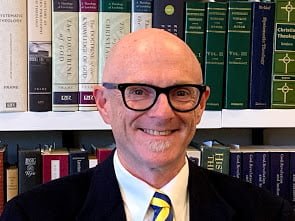⏱️ Estimated Reading Time: 5 min read
The Loss of Antithesis
The loss of antithesis in American culture led to what Dr. Schaeffer coined the “line of despair” or giving up all hope of achieving a rational unified answer to knowledge and life. Schaeffer outlines what he believes are the various steps below this line of despair. He begins with the German philosopher, Georg William Friedrich Hegel (1770-1831) who became the first man to open the door into the line of despair. Hegel taught what we really have is a thesis, and an opposite antithesis, with the answer of their relationship not a horizontal movement of cause and effect, but a synthesis, or dialectical thinking. In the end result, Hegel’s philosophy produced a synthesis as opposed to antithesis which could be arrived at by reason.
Schaeffer believes that while Hegel opened the door to the line of despair the Danish philosopher, Soren Kierkegaard was the first one to go below the line. Kierkegaard concluded that one could not arrive at synthesis by reason alone. Rather, one achieves everything of real importance by taking a “leap of faith.” Schaeffer, therefore, maintains that Kierkegaard’s conclusions gradually led to the absolute separation of the rational and logical from faith.
The Leap of Faith and the Line of Despair
What is this leap and what does it involve? Schaeffer teaches that Kierkegaard’s leap put away the hope of any unity. Schaeffer writes, “The leap is common to every sphere of modern man’s thought. Man is forced to the despair of such a leap because he cannot live merely as a machine. If below the line man is dead, above the line, after the non-rational leap, man is left without categories. There are no categories because categories are related to rationality and logic. There is, therefore, no truth and no nontruth in antithesis, no right or wrong – you are adrift.” (Escape From Reason, 241, 256).
Schaeffer continues to chronicle the subsequent philosophers who followed Kierkegaard’s thought including the atheistic existentialism of Karl Jaspers, Jean-Paul Sartre, and Martin Heidegger. These men reasoned below the line of despair and gave up hope of a rational answer to the questions of life. The end result: they are left with only the anti-rational.
Schaeffer proceeds to explain what he considers the further steps under the line of despair. The first as noted above began with philosophy. The second step was art. The third – music. The fourth – culture and the fifth step was the new theology which was opened by Karl Barth. While most refer to this brand of theology as “liberal” or “neo-orthodox,” and rightly so, the issue at hand runs deeper than labels. Indeed, liberal theology rejects the deity of Christ, the inerrancy of Scripture and the New Testament miracles. The new theology knows nothing of man being created in the image of God. But Schaeffer adds further clarity to the issue:
“All the new theology and mysticism is nothing more than a faith contrary to rationality, deprived of content and incapable of contentful communication. You can bear ‘witness’ to it, but you cannot discuss it. Rationality and faith are out of contact with each other” (The God Who Is There, 64).
Man, therefore, is left in a state of despair which “arises from the abandonment of the hope of a unified answer for knowledge and life. Modern man continues to hang on to his rationalism and his autonomous revolt even though to do so he has had to abandon any rational hope of a unified answer” (Escape From Reason, 235-236).
The Consequences of Despair
The consequences and despair of modern man can be found in three areas. Falling prey to nihilism or embracing a worldview that offers no hope.
The second is found in the fact that he accepts a false dichotomy (what Schaeffer calls an “absolute dichotomy”) between nature and grace. However, the modern scheme is presently a dichotomy between contentless faith (no rationality) and rationality (no meaning). “All the new theology and mysticism is nothing more than a faith contrary to rationality, deprived of content and incapable of contentful communication. Rationality and faith are out of contact with each other” (The God Who Is There, 64).
Third, since there is no integration point between rationality and faith man engages in acts of desperation in order to find meaning, namely, he accepts a mysticism which gives an illusion of unity to the whole. Hence we understand why the influx of eastern religion such as Hinduism, i.e., the New Age Movement has gained such a popular foothold in America today. If there is no hope of a unified field of knowledge one must cling to a mystical world-view that has no rational base but promises hope for the present and the future.
Schaeffer enhances his discussion by contrasting the Christian faith with modern man’s faith which has turned inward. In Christianity, the value of faith depends upon the object towards which the faith is directed. So it looks outward to the God who is there, and to the Christ who in history died upon the cross once for all, finished the work of atonement, and on the third day rose again in space and in time. This makes the Christian faith open to discussion and verification (The God Who Is There, 65).




